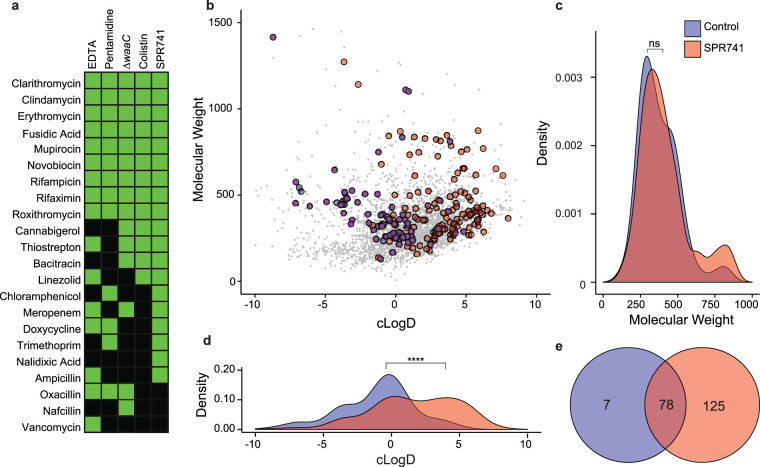FIG 1.
Identifying changes in permeability by outer membrane perturbation. (a) Heat map showing antimicrobials potentiated (reduction in MIC >4-fold shown in green) or unaffected (reduction in MIC ≤ 4-fold shown in black) by five OM-perturbing conditions. (b) Physicochemical space of 3,645 compounds screened for bacterial growth inhibition, visualized by molecular weight and calculated logD (cLogD) at pH 7.4. Compounds are colored by growth-inhibitory activity, E. coli control (blue), E. coli with SPR741 (red), no activity in either condition (gray) and activity in both conditions (purple). (c and d) Density plots of molecular weight and cLogD for growth-inhibitory compounds in the E. coli control (blue) and SPR741 condition (red). SPR741 significantly alters the hydrophobicity of compounds compatible with growth inhibition (****, P < 0.0001 by the Kolmogorov-Smirnov test) (d) but not molecular weight (c) (P > 0.05 by the Kolmogorov-Smirnov test). ns, not significant. (e) Venn diagram showing the number and overlap of compounds with growth-inhibitory activity in the E. coli control (blue) and SPR741 condition (red).

